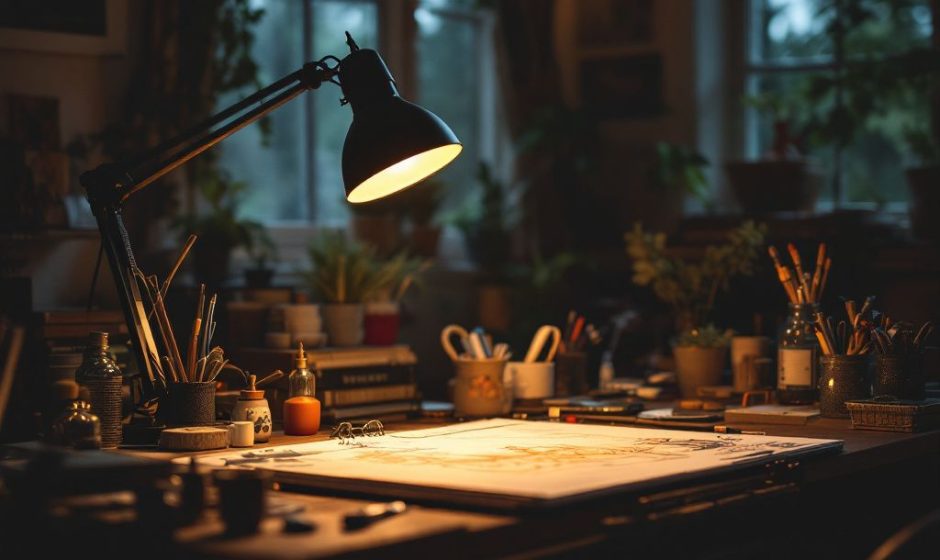Hey there, fellow creative soul. Have you ever found yourself in the middle of a creative project, totally burned out, wondering if this whole artistic thing is more drain than dream? You’re certainly not alone. And here’s the hook—finding the sweet spot in your creative career health hinges on managing stress, hormonal balance, and maintaining a sense of wellness. Trust me, these are the secret ingredients to thriving in the wild world of creativity.
Let’s dig in, shall we? Hormonal regulation in the life of an artist is way more crucial than it’s given credit for. Creating is exhilarating, but it can also be exhausting, both mentally and physically. Juggling deadlines, battling creative blocks, facing frequent rejections—all while trying to fund your passion can take a toll. Here’s where understanding the entwined relationship of stress and hormone regulation becomes your creative superpower.
Why Creatives Need Hormone Regulation
To cut to the chase, hormone regulation isn’t just some medical mumbo jumbo. It’s your body’s way of maintaining balance amid chaos. For creators, stress hormones like cortisol can wreak havoc—turning rich source material into that dreaded creative slump. This is why keeping tabs on our hormone balance is key to effective artist wellness.
Cortisol, Our Frenemy
Cortisol, known as the stress hormone, is a bit of a double-edged sword. While necessary for getting us out of tight deadlines, too much of it drags down your creative mojo. Constant high levels, though? They can cause persist shocks to your system, running down your battery faster than expected. You know those days when inspiration seems miles away, and every sketch, word, or chord feels off? That could be cortisol calling.
Creativity-Curtailing Drama: Imbalance
When cortisol has too much freedom, it messes with mood, sleep, and even your appetite. It’s part of what derails those jam-packed art nights and sends you flicking through Netflix instead. When your cortisol is out of whack, so is your instinct and passion. You might notice your patience slipping away or simple things turning monumental. Yep, that’s what hormone imbalance does—it’s frustrating.

Steps to Regulate Your Hormones
Okay, less moaning, more fixing! Let’s get practical. It involves a mixture of lifestyle shifts, diet, and awareness. Here’s what you should aim for:
1. Get Your Zzz
It’s like hearing the same old broken record, right? But sleep, my friend, actually is the golden elixir of creativity. Adequate sleep keeps cortisol in check and greases the gears of imagination. Aim for 7 to 9 hours. No more night-shaming! Need a sleep schedule magnum opus? Try heading to bed and waking up around the same time each day—this consistent cycle works wonders.
2. Fuel Your Fire (With Food!)
Forget crazy diet plans. We’re talking about nourishment that fuels your imagination. Omega-3s, for example, can play a hefty hand in hormone regulation. Thumbs up to nuts, seeds, and fatty fish. Oh and the healthy greens like spinach or kale help too. Let’s keep the workshop stocked with the right snacks, shall we?
3. Meditation Station
Sure, calming your mind with meditation sounds cliché, but wait until you really sink into its benefits. It’s not just for monks with their serene postures; it’s for your creative brain, too. Spend a few minutes each day in a state of zen—your cortisol levels will thank you.
4. Move It!
Exercise is like brain food for artists. Not only does it balance cortisol and reduce stress, but it also fuels creativity. Find something you love—a casual bike ride, dancing like no one’s watching, yoga, or even short walks around your studio. The point? Keep moving and shake the cobwebs off.

5. Quality Downtime
Good old downtime is underrated. An artist’s brain needs to rejuvenate—to be blank for new inspiration. Read a book, watch great cinema, doodle aimlessly. Let yourself wander without guilt. Sound counterproductive? Give this a try. Ideas tend to sneak in when you least expect them.
A Piece for Prospective: Perspective Transformatives
Now, perspective does matter! Count how often we stay immersed in our trenches without a second thought. Looking through another lens, though—even briefly—encourages your creative juices.
Exploring Environment
Changing your environment can shift moods too. If the studio’s feeling a little stale, head to a new cafe, or even just a park. Trust me on this one; a change of scenery often sparks a change in thinking.
Meet Your Fellow Innovators
Surrounding yourself with other artists can help, too. Share experiences, exchange ideas, discuss challenges. It keeps that sensitive creative spark alive.
Avoiding Baseline Burnout: Check-Ins

A regular pulse check with oneself is often what it takes. Jot down how you feel week by week. Free-form journal—a where-you’re-at kind of exercise. This reflection often clarifies a lot about where your energy and focus go.
Finding Purpose Without Heartache
Remember, your creative health is also about “why” you create. Getting to the very essence of purposeful artistry refreshes the soul—without striping enthusiasm. Finding joy and connection in your craft turns an otherwise chaotic career into forgone harmony. It becomes less about hustle and more invigorating than before.
Write Your Own Nessie
Like musicians craft crescendos or artists paint shadows, contemplating your perceptions serves as merely another brushstroke. Even when isolation bangs at your door, finding light extracts beauty—crackled on your canvas.
Wrapping It Up
So, overall, creative health encompasses a whole array of factors, some that we control day-to-day, and some less so. Still, being proactive by nurturing things like hormone regulation promises insight and the upper hand to maneuver through necessary tensions. Are there occasional disruptions in zen harmony? Sure, that’s just part of life. Yet when shunned disruptions become built-in menu defaults, creativity shudders quietly on the backseat.
Indulge in community, never compromise on nourishment, and consistently seek spaces that allow you to flourish. Tune in, too, perhaps for possibly the very first time, to signals and signs your body’s whispering subtly. When creativity becomes simply effortless charming reflex, you’ll know you’ve struck gold.
And remember-close moments in this creative tribe deliver art those unpredictable sparks. What’s today may turn tomorrow’s contours of silhouettes but nourishing this present moment lays lifetime seeds. Keep blossoming, beloved scribes and souls.
Frequently Asked Questions
What is hormone regulation, and how does hormone replacement therapy (HRT) work?
Hormone regulation involves maintaining the balance of hormones in the body. Hormone replacement therapy (HRT) works by topping up or replacing missing hormones, particularly during perimenopause and menopause when levels of oestradiol, progesterone, and sometimes testosterone decline. HRT helps improve symptoms and future health by providing stable levels of these hormones[1][3].
What are the common signs and symptoms of a hormonal imbalance?
Common signs and symptoms of a hormonal imbalance include irritability and fatigue, mood swings and depression, skin dryness and loss of elasticity, water retention and weight gain, osteoporosis and joint pain, less interest in sex, insomnia and other sleep disorders, and memory issues and difficulty concentrating[3][5].
What are the different types of hormone replacement therapy available?
There are several types of hormone replacement therapy, including systemic hormone therapy (in pill form, patches, rings, gel, cream, or spray), low-dose vaginal products (cream, tablet, or ring forms), and bio-identical hormone replacement therapy, which is identical in structure to human hormones and may have fewer side effects than traditional HRT[1][3].
What are the common side effects of hormone replacement therapy?
References





